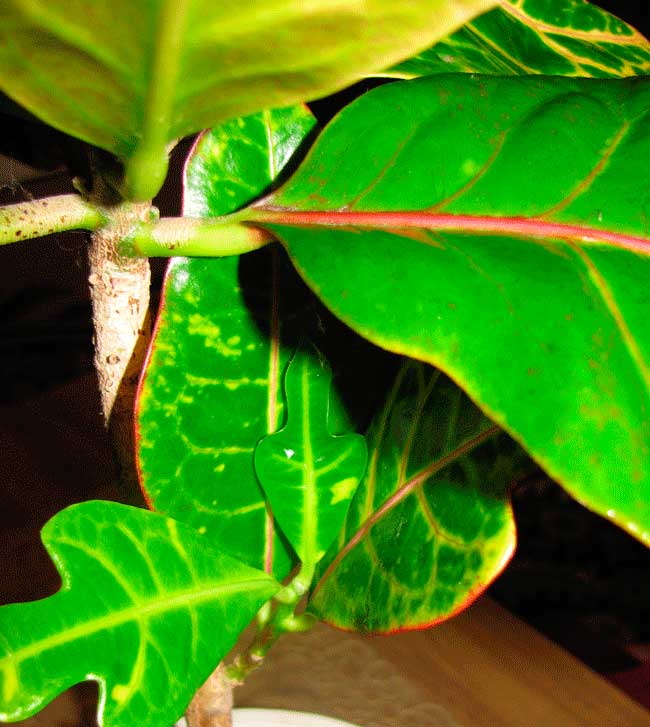When you know what to plant next to this or...
Varieties of Croton. Pick the Right One
Croton is a beautiful multicolored plant, which I, as a landscape designer, often use for outdoor decoration. Due to its tropical origin, a croton can be a stunning and spectacular addition to any office, room or garden.
These plants have a long history. At first crotons were used to add colorful ornaments to tropical gardens, and now they are among the most popular house plants.
✔ We Released The Croton HandBook
CLICK HERE TO LEARN MORE >>
There are different varieties of crotons, many of which are available nowadays. They range in leaf shapes and sizes. Some have broad, glossy, cut-out leaves, while others are distinguished by long, slender foliage. Croton species also vary in leaf colors: from yellow, red, pink to dark green.
My favorite varieties of croton are Petra Crotons, Banana Crotons and Gold Dust crotons.
Petra Croton is often called “autumn plant”. I love it because of its waxy rainbow leaves.
Gold Dust Croton is a bushy cultivar growing upright. It has such a name because of some gold specks on the foliage. It doesn’t blossom.
The last in the list is Banana Croton. To my mind, it is the most interesting plant among the mentioned types of croton plants. It is a thick cultivar with long leaves. I experienced some troubles with this specimen at first.
I wasn’t aware of the fact that bright light is a requirement. I put a poor plant in the site where the light is rather low. The foliage turned green immediately. Luckily, I didn’t make this mistake twice and the next plant pleased me with its linear leaves and yellow veins.
Regardless of the type, the average life span of this plant exceeds two years. But if you fulfill basic croton care requirements, it will continue to gladden your eye. All crotons are considered to be quite fussy. The requirements are as follow:
- The soil must be well drained as the genus can’t tolerate "wet feet". Let the soil dry out a bit between waterings.
- The amount of light necessary for the cultivar depends directly on the variety. Generally, the more colorful the plant foliage is, the more light the plant will need.
- The genus is a tropical plant so it enjoys high humidity.
- Watch out for drafts and cold. The plant can’t put up with temperatures below 60 F. If you forget about it, croton is likely to lose its leaves and may even die.
- Pests can affect the health of the plant. They are spider mites, mealy bugs, caterpillars. Consequently, you should check the plant on their presence regularly.
The relationship between crotons and pets is complicated. The thing is that this eye-catching species is toxic and can harm if being digested. Its sap can cause allergy if the skin is exposed to it from time to time. That is why a person who is sensitive to it should wear long sleeves and gloves.










